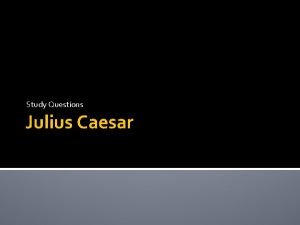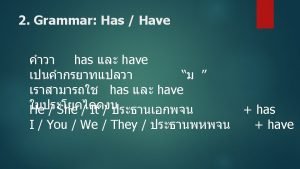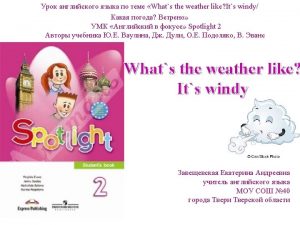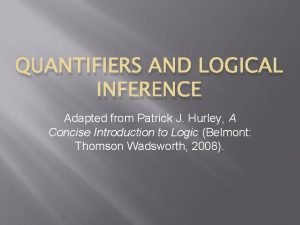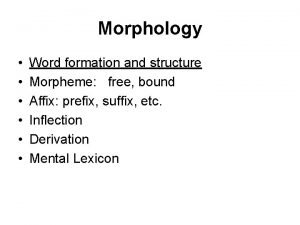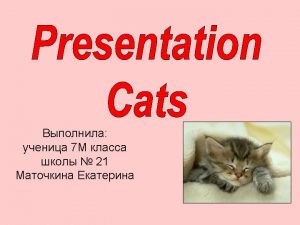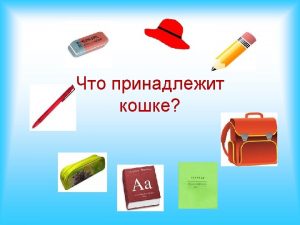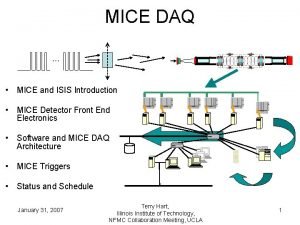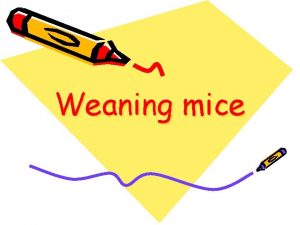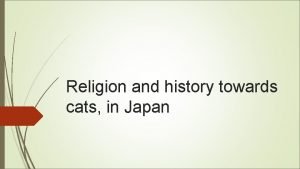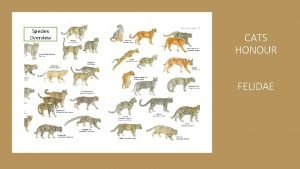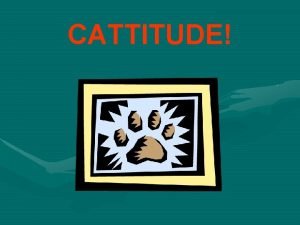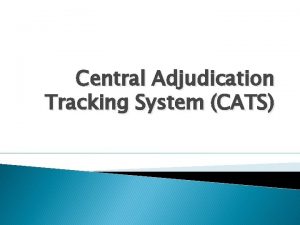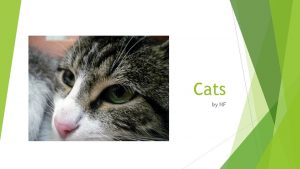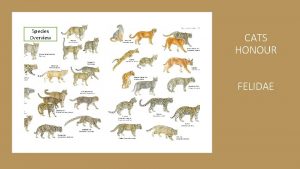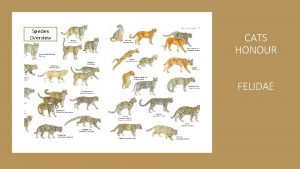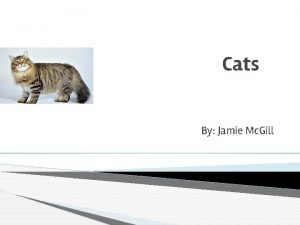Why do cats chase mice LO To demonstrate

























- Slides: 25

Why do cats chase mice?

L/O: To demonstrate an understanding of Suffragette tactics and the Government’s response Have a guess! What is this poster about?

Why do you think it was called the Cat and Mouse Act? It was similar to the way cats play with its prey before eating it!

What can we see? Key details What can you infer from this picture what is happening and why? Context and background

What can you see here? What details have been included here?

What can we infer from this poster about Suffragette tactics?

What can we infer from this poster about the Government’s response?

How did the Government respond? • The Liberal Government did not know how to handle the protests of the Suffragettes. • The Suffragettes became increasingly more militant – they deliberately committed acts of crime to go to prison. • In prison the Suffragettes went on hunger strike. • As a response the Government force fed them. • They promised to introduce a bill (a law) to give women the right to vote and then abandoned it! • The cat and Mouse Act of 1913 enabled the Government to release the hunger strikers before they died. Then capture them and put them back in

Emmeline Pankhurst

Why is Emmeline Pankhurst so important? • She became angry about women’s lack of rights. • With her two daughters, she formed the Women’s Social and Political Union in 1903. This became a very popular group and gained thousands of members. • She wasn’t afraid to use violence to get her way!

The Suffragette were violent? Really? Yes! The Suffragettes were determined and used a number of violent methods to get their demands listened to. What kind of things do you think they did?

They burned down Churches if they didn’t support women’s rights!

They broke the all shop windows in Oxford Street and vandalized buildings.

They chained themselves to the railings of Buckingham Palace!

Many Suffragettes were arrested (including Emmeline Pankhurst).

While in prison, many suffragettes went on hunger strike and had to be force fed. Why do you think they were force fed?

The prison officers force fed them so they didn’t die and become a martyr (someone who is worshipped because of what they did in their life).

The government were highly embarrassed that the Suffragettes had to be force fed so the ‘Cat and Mouse Act’ was introduced.

If a suffragette went on hunger strike, the officers would wait until she was too weak to cause any harm to the public. She would then be released from prison. It was assumed she would eat and regain her strength. If she then caused trouble, she would be re-arrested. it was assumed that she would then go back on hunger strike. Then the cycle would start again.

Do you think the Suffragettes gave up after so many were arrested? No! They refused to give up, and those not in prison kept on protesting! The Cat and Mouse Act made them more determined!

• https: //www. youtube. com/watch? v=q. TPquha Rx. Uw • Sheila Hancock documentary (20 mins plus cat and mouse)

L/O: To demonstrate an understanding of Suffragette tactics and the Government’s response Things I can see 1 ………………… 2……………………………. 3 ……………………………. . Things I can infer about Suffragette tactics 1…. …………………………. …. 2…………………………… 3……………………………. Things I can infer about the Government’s response? 1…………………………… 2…………………………… 3……………………………. .

Do you understand … Nature Origin Purpose Key details Context ?

Nature A poster. Posters are usually produced for propaganda give a message that persuade people to act or think in a certain way. Origin It was produced in 1942, during WW 2 by the British government. Purpose It was produced to convince mothers not to bring their children after they had been evacuated. Key details Ghost-like figure of Hitler, tempting the mother. Mother and children in the countryside. Mother looks unsure and as if she is trying to decide something, Context This poster is about evacuation. By 1942 some of the bombing had stopped in Britain and many mothers began to bring their children back.

Your task is to answer the question ‘What does this poster tell us about the Government’s response to Suffragette tactics”. Refer to these elements: Nature… ‘This is a ……. . Origin……… ‘It was produced by…. Key details ……… ‘In it we see…. . Context …‘The background to this is. . … Purpose…… ‘ It was aimed at …. . in order to……. . The overall message is………….
 Why why why why
Why why why why Who is the first to stab caesar? *
Who is the first to stab caesar? * Miumiu
Miumiu Don't ask why why why
Don't ask why why why Why was of mice and men banned
Why was of mice and men banned Fat sholes
Fat sholes Cinquain about cats
Cinquain about cats Diamante poem
Diamante poem Practical clinical pathology
Practical clinical pathology Natural selection in cats
Natural selection in cats Smarty cats tutoring
Smarty cats tutoring Cats make wonderful house pets
Cats make wonderful house pets Project management herding cats
Project management herding cats Definition of figure of speech personification
Definition of figure of speech personification She has two cats
She has two cats Tongue twisters about cats
Tongue twisters about cats The day they parachuted cats on borneo
The day they parachuted cats on borneo Symbolize the statement “all cats are animals”.
Symbolize the statement “all cats are animals”. Amaurotic cats eye reflex
Amaurotic cats eye reflex Amaze word formation
Amaze word formation Cats rvc
Cats rvc Bag lunch by dillard perkins
Bag lunch by dillard perkins Black cats
Black cats Cats of borneo chronological order
Cats of borneo chronological order Cats of borneo order of events
Cats of borneo order of events Cat duet rossini
Cat duet rossini

